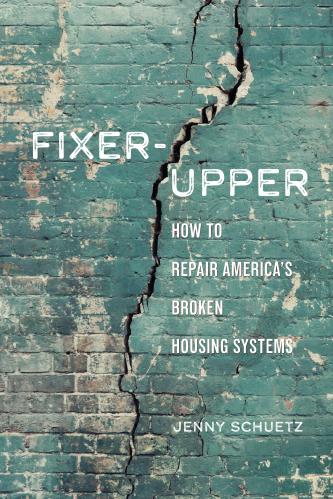Cities across the globe are gasping in extreme summer heat. Last week, the United Kingdom—known for its cool, rainy climate—broke its all-time-high temperature record, topping out at 104.4 degrees Fahrenheit. Meanwhile, U.S. cities are scrambling to protect their residents and physical infrastructure from the dangers of extreme heat, which can cause school closures, transit system malfunctions, strained electrical grids, and more. Extreme heat kills over 600 people in the U.S. each year; older adults, very young children, and people with chronic diseases are the most vulnerable.
Climate change is worsening these trends. By the end of the century, realistic scenarios project that the planet will get 5 to 6 degrees warmer. Urban areas are particularly affected, as large residential and commercial buildings, roads, sidewalks, and other impervious surfaces throughout the built environment create heat islands that absorb and retain heat during the hottest times of the day and reduce cooling overnight. Under these projections, when faced with a once-in-a-generation heat wave, more than 20,000 lives could be lost in major U.S. cities.
Through indoor air conditioning, the U.S. is much better equipped to keep people safe during periods of extreme heat compared with a century ago. Nationally, about 70% of homes now have central AC, while about 10% of households have no air conditioning. But the presence and type of home AC varies considerably by geography. Like exposure to other climate risks, protection from extreme heat also varies by income, tenure, and race.
Metro areas vary widely in the prevalence of home air conditioning
Access to home AC varies across the US, largely—but not entirely—reflecting regional differences in climate. In Southeast and Southwest metro areas such as Atlanta, Houston, and Phoenix, 95% of homes are at least partially cooled by central air, while less than 3% have no air conditioning. (The Census Bureau’s American Housing Survey asks households whether any part of the house has AC.) West Coast metro areas such as Seattle, San Francisco, and San Jose, Calif. have the highest share of homes with no AC, while Northeast and Midwest metro areas with older housing stock tend to have more homes that rely on window AC units.
 The regional patterns reflect differences both in climate and the vintage of housing stock. Metro areas in the Pacific Northwest, West Coast, and bordering the Great Lakes have historically had mild summers, with less need for home cooling—patterns that may not last under the stresses of climate change. Last year, nearly 70 people in Portland, Ore. died in a heat wave.
The regional patterns reflect differences both in climate and the vintage of housing stock. Metro areas in the Pacific Northwest, West Coast, and bordering the Great Lakes have historically had mild summers, with less need for home cooling—patterns that may not last under the stresses of climate change. Last year, nearly 70 people in Portland, Ore. died in a heat wave.
Additionally, some metro areas close to one another—sharing largely similar climates—show pronounced differences in AC access. In Ohio, Cincinnati and Cleveland have similar summer climates, but three times as many households in Cleveland—a substantially poorer metro area—have no AC. In California, Riverside and Los Angeles offer an unusual comparison of geographically close metro areas: About 20% of households in Los Angeles (which enjoys cooler temperatures due to its ocean proximity) have no AC, compared to under 7% of households in warmer Riverside (also known as the Inland Empire).
Across all metro areas, lower-income households and renters are less likely to have AC
Pooling data from all 35 metro areas we observed shows that access to AC, especially central air, is positively correlated with household income (Figure 2). About 12% of households in the lowest income quartile have no AC, and just over 60% have central air. In the highest income quartile, only 6% have no AC, and more than 80% have central air. (Income quartiles are defined within metro areas, taking into account that both income levels and AC prevalence vary widely across different places.)
 These differences are also reflected in tenure status. More than 12% of renter households—who typically have lower incomes and wealth than homeowners—have no AC, and less than 60% have central air. By contrast, less than 7% of homeowners have no AC and nearly 80% have central air.
These differences are also reflected in tenure status. More than 12% of renter households—who typically have lower incomes and wealth than homeowners—have no AC, and less than 60% have central air. By contrast, less than 7% of homeowners have no AC and nearly 80% have central air.

Like exposure to other climate risks, AC access shows a pronounced racial equity gap
In metro areas where a substantial number of homes lack AC, there are pronounced racial gaps, with Black and Latino or Hispanic households being less likely to have AC. The built environment in many historically Black neighborhoods—lack of tree cover and more paved surfaces—compounds the problem.
New York City and Detroit have relatively large Black populations and large Black-white disparities in AC access. In Detroit, less than 4% of white households lack AC access, compared to more than 15% of Black households. New York’s Black-white AC access gap is also large, at just under 10%.
Rochester, N.Y. and Seattle have larger white majorities, but similarly stark disparities: Less than 15% of white households in Rochester lack AC, compared to nearly 30% of Black households. Black, Latino or Hispanic, and Asian American households in Seattle are all less likely to have AC. Additionally, minority households are more likely to live in the hottest part of metro areas, increasing their risk from extreme heat.

Lack of air conditioning is especially a problem for older homes
In-home AC, especially central air, is a comparatively recent feature of residential construction, and did not become widespread until the mid-20th century. Indeed, the adoption of modern AC enabled the rapid post-World War II growth of Sun Belt metro areas, where most homes are new and central air is standard.
Among metro areas in the Northeast and Midwest, where pre-war homes are a much larger share of the housing stock, central air is fairly standard in newer homes, while window units have been added to many older homes. For instance, 95% of post-1990 Detroit homes and 77% of post-1990 Rochester homes were built with central air, compared to less than 40% and 20% of pre-1940 homes in those locations, respectively. The Pacific Northwest, known for its mild summers, is one region where air conditioning has not become standard in new construction; less than half of Seattle homes built after 1990 have any form of AC, and less than one-third have central air.

Policymakers need short- and long-term strategies to reduce the impacts of extreme heat
As climate change makes spells of extreme heat more common across the U.S., policymakers should consider a range of adaptation and mitigation strategies to protect the public’s health and safety. Short- term options include distributing high-efficiency AC units to homeowners and landlords, especially those who own older properties. Many low-income households already face high housing and energy cost burdens and cannot afford the extra electricity costs associated with AC, so expanding utility subsidies (at least during heat waves) may be needed. Local governments should also expand the number of cooling centers (often held in schools, libraries, churches, and other anchor institutions), especially in low-income, Black, and Latino or Hispanic communities where AC access is limited.
Longer-term options include expanding subsidies and technical assistance for property owners—both homeowners and landlords—to weatherize their buildings. Local and state governments should also prepare for a warmer future by reducing the effects of urban heat islands. Strategies such as planting trees, maintaining parks, building fountains and mists, financing green or cool roofs, and installing lighter colored pavement are relatively quick and low-cost, unlike long-term goals such as more climate-friendly land use.
Any policymakers who grumble at public investments to build more heat-resilient communities should consider the benefits: lower expenditures on paramedics and hospitals called to treat heat-related illnesses, not to mention saving human lives.





Commentary
As extreme heat grips the globe, access to air conditioning is an urgent public health issue
July 25, 2022